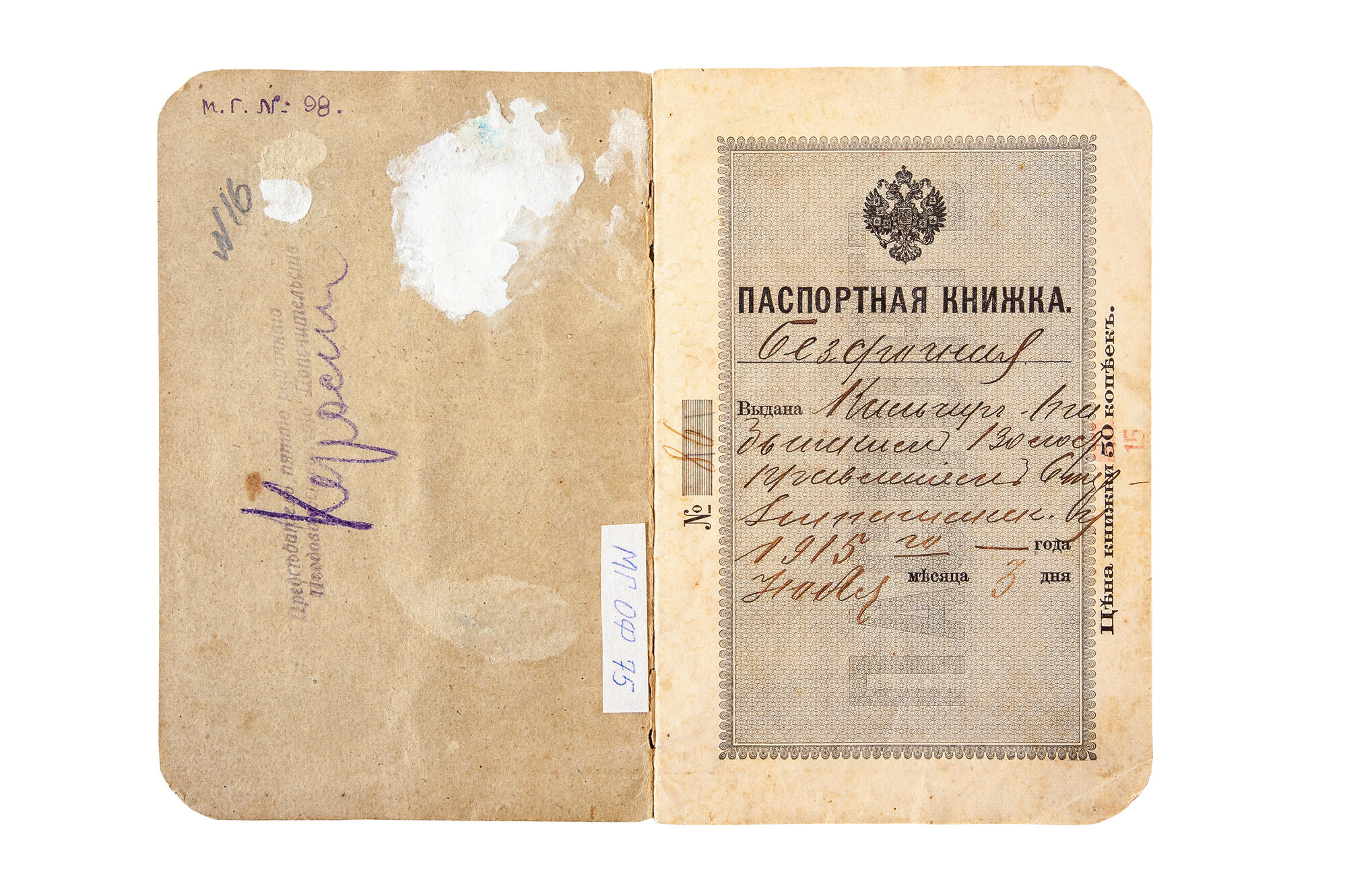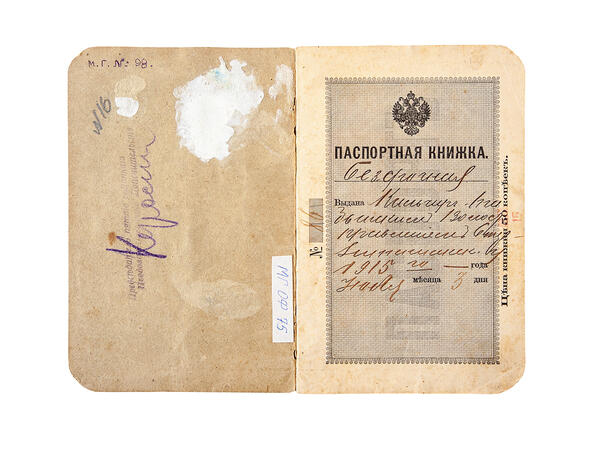The exhibition displays the passport of Majit Gafuri. The first identity documents appeared in Russia in the 18th century. In 1721, Peter I introduced mandatory passports for peasants who temporarily left the place of their permanent residence. At the beginning of the 19th century, foreign passports appeared. In 1803, under Alexander I’s rule, printed passports were introduced to merchants, burghers and peasants; they were valid only in Russia.
Passports became closer to modern type passports by the end of the 19th century. Since 1895, based on the “Passport Statute”, some Russian citizens began to receive “residence permit”. Thus, the first passport reform began. From October 5, 1906, an official document certifying the identity of citizens in Russia was called “Passport book”. It contained information about place of birth, social class and religion, as well as a mark of registration.
After the October Revolution in 1917, the passports were canceled as one of the manifestations of tsarist despotism. At that time, any document served as a proof of identity, for example, a trade union card. The passport system was fully restored only in 1932. Since that time, passports were required for all citizens over the age of 16. Passports were reintroduced in cities, towns and district centers. They indicated the name, patronymic, surname, date and place of birth, nationality, social status, permanent address and place of work, the supporting documents, and also a mark of compulsory military service.
Peasants at that time did not receive passports. They could only move from one village to another. There were a lot of so-called “deprived” — deportees and “unreliable” citizens, who were denied the right to obtain a document by the authorities.
In 1937, the first type of a passport with a photo card was introduced. Collective farmers began to receive passports only during the “Khrushchev Thaw”. Around the same time, the entire population got passports. A standard for the modern Russian passport was adopted in 1997.
Passports became closer to modern type passports by the end of the 19th century. Since 1895, based on the “Passport Statute”, some Russian citizens began to receive “residence permit”. Thus, the first passport reform began. From October 5, 1906, an official document certifying the identity of citizens in Russia was called “Passport book”. It contained information about place of birth, social class and religion, as well as a mark of registration.
After the October Revolution in 1917, the passports were canceled as one of the manifestations of tsarist despotism. At that time, any document served as a proof of identity, for example, a trade union card. The passport system was fully restored only in 1932. Since that time, passports were required for all citizens over the age of 16. Passports were reintroduced in cities, towns and district centers. They indicated the name, patronymic, surname, date and place of birth, nationality, social status, permanent address and place of work, the supporting documents, and also a mark of compulsory military service.
Peasants at that time did not receive passports. They could only move from one village to another. There were a lot of so-called “deprived” — deportees and “unreliable” citizens, who were denied the right to obtain a document by the authorities.
In 1937, the first type of a passport with a photo card was introduced. Collective farmers began to receive passports only during the “Khrushchev Thaw”. Around the same time, the entire population got passports. A standard for the modern Russian passport was adopted in 1997.










